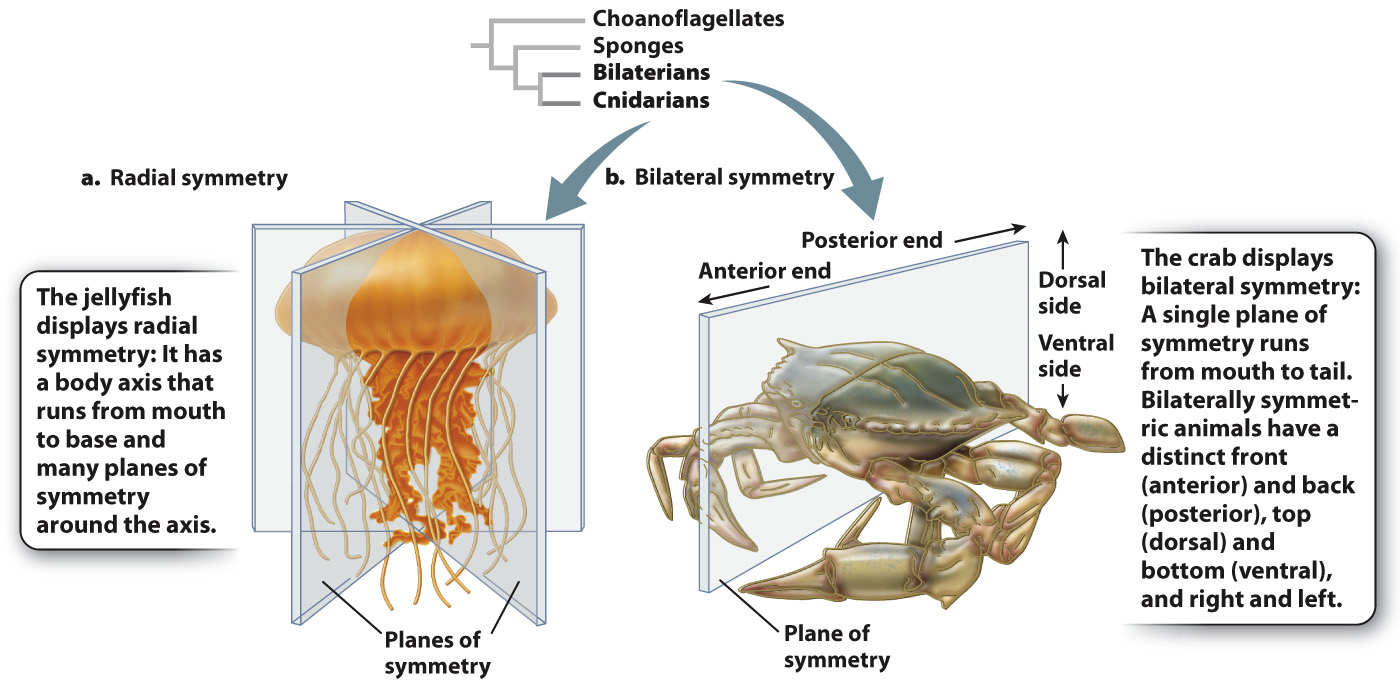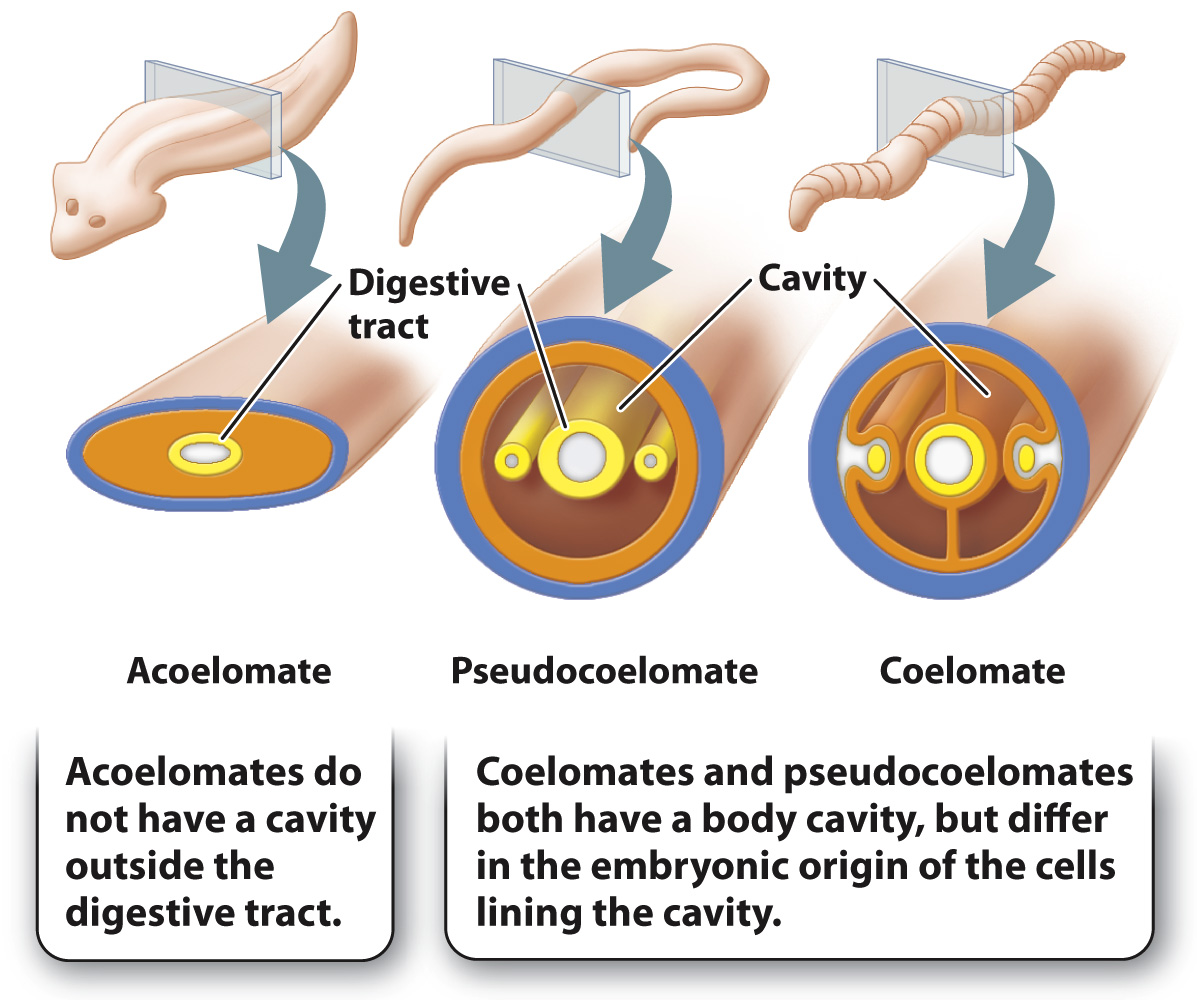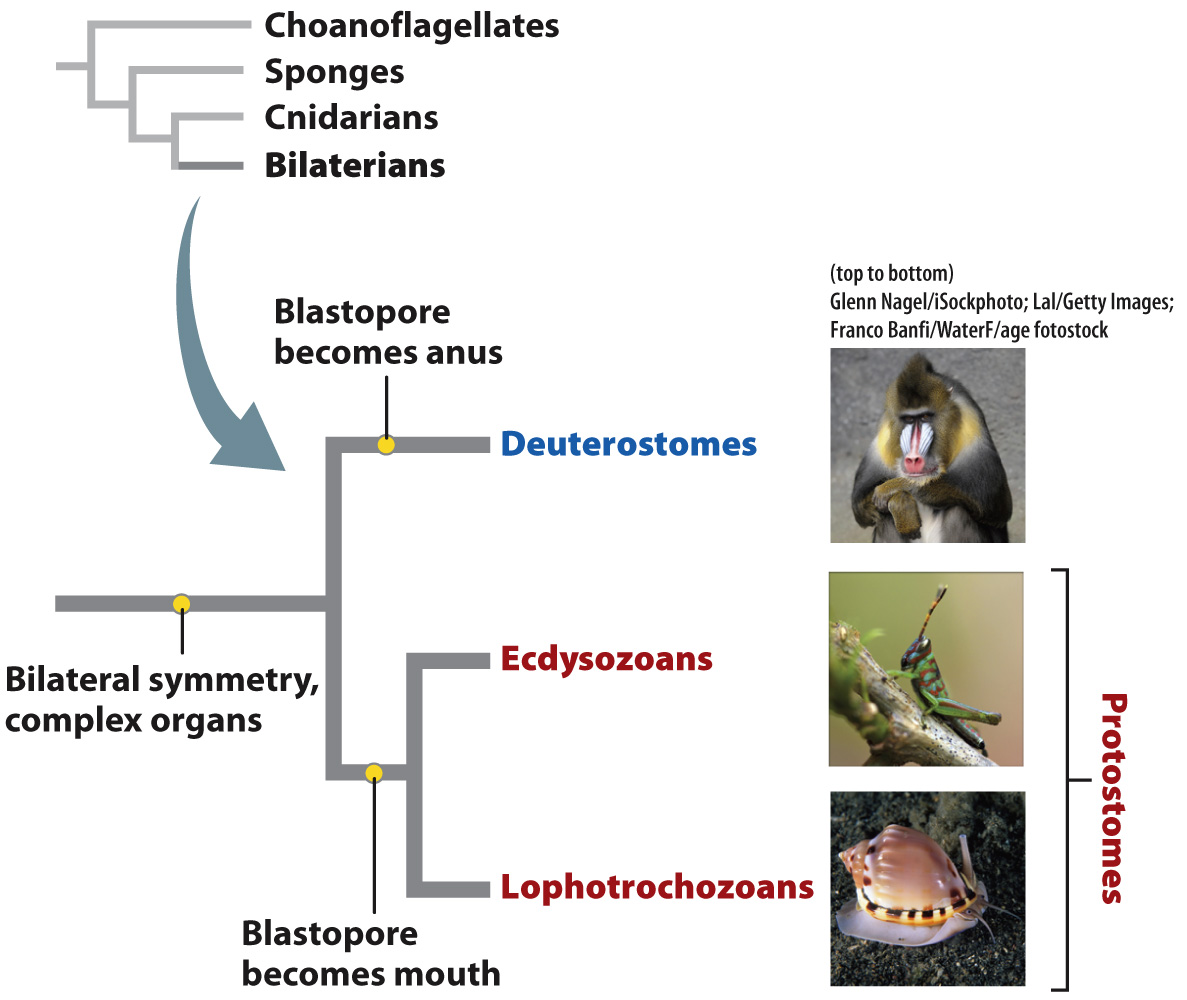Morphology and development provide clues to animal phylogeny.
Early in the history of biology, taxonomists such as Carolus Linnaeus recognized that for all their diversity, animals can be sorted into a limited number of distinctive body plans, each group today formally called a phylum. The problem for biologists has long been how to understand the evolutionary relationships among animal phyla, still an active field of research.
Nineteenth-
Early biologists could also see that animals differ in the symmetry of their bodies (Fig. 44.2). Sponges are often irregular in form, with no plane of symmetry. In contrast, jellyfish and sea anemones display radial symmetry, meaning that their bodies have an axis that runs from mouth to base with many planes of symmetry through this axis (Fig. 44.2a). This organization allows jellyfish to move up and down in the water column by flexing muscles around their bell-

Within the bilaterian group, however, understanding evolutionary relationships proved more difficult to early taxonomists. Some biologists pointed to the presence or absence of a cavity, or coelom, surrounding the gut, dividing bilaterians into three groups: those without a body cavity (acoelomates) and those with a body cavity (coelomates and pseudocoelomates, which differ in the embryonic origin of the cells lining the cavity). These body plans are shown in Fig. 44.3. A body cavity cushions the internal organs against hard blows to the body and enables the body to turn without twisting these organs. It also allows internal organs like the stomach to expand, enhancing digestive function.

New insights became possible with the advent of microscopes that enabled the direct study of development from its earliest stages. One important observation was that some animals that look very different as adults share patterns of early embryological development. For example, adult sea stars and catfish have few morphological features in common, but their embryos show a number of key similarities, including the number of embryonic tissue layers they develop and the way that the early cell divisions occur. In the phylum Cnidaria, which includes jellyfish and sea anemones, the embryo has two germ layers, the endoderm and the ectoderm, from which the adult tissues develop. These animals are therefore called diploblastic (Fig. 44.4). Bilaterally symmetrical animals, the Bilateria, are triploblastic, with a third germ layer, the mesoderm, lying between the endoderm and ectoderm, which develops into muscles and connective tissues (Fig. 44.4).

Comparative embryology also enabled biologists to divide bilaterian animals into the two groups shown in Fig. 44.5, which are called protostomes (from the Greek for “first mouth”) and deuterostomes (from the Greek for “second mouth”). In protostomes, the earliest-
